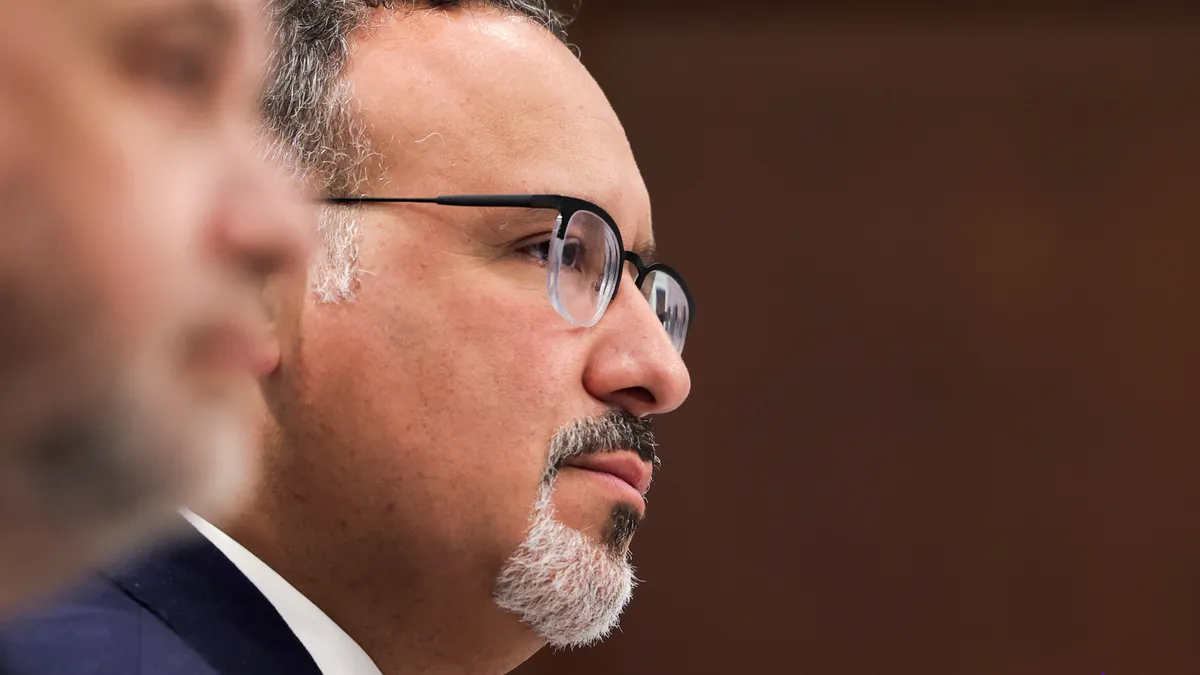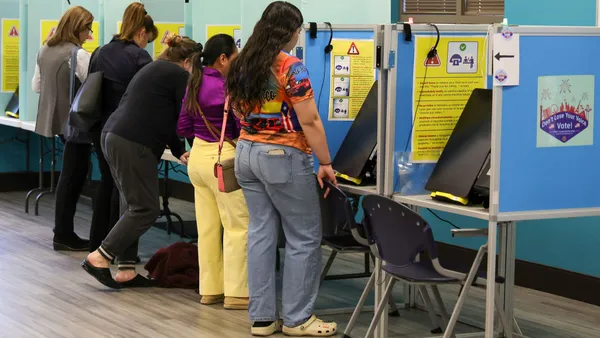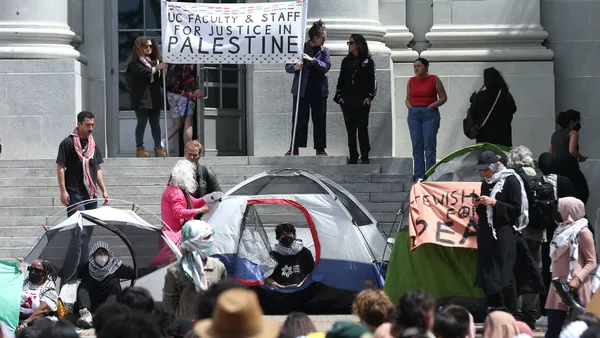Dive Brief:
- Three in five states placed limits or freezes on tuition rate increases at public four-year colleges between fiscal 2017 and fiscal 2022, according to a report released Tuesday from the State Higher Education Executive Officers Association.
- Tuition restrictions were less common in the two-year sector, with just 2 in 5 states limiting or freezing tuition over that period.
- Both two- and four-year sectors saw tuition freezes become a more popular policy in recent years than just placing limits on tuition increases. In 2021-22, 65% of state tuition restrictions at four-year institutions were freezes, compared to just 38% four years prior.
Dive Insight:
SHEEO has periodically released its survey on tuition and fee policies since 1979. The latest survey, which covers state policies during the five-year period ending in fiscal 2022, suggests that student affordability has become a major concern for both policymakers and colleges.
This is evident through the increased use of tuition freezes and limitations, according to the report. When states opt for tuition hike limitations over freezes, they typically capped price hikes at 2% to 4%.
While tuition restrictions may make college more affordable for students, the researchers argued, it’s important that states pair these policies with additional funding to help offset rising costs for public colleges.
“When states enact tuition rate freezes and limits but do not increase state funding, most institutions become more efficient and cut costs,” the report said. “Such revenue declines negatively impact student retention and graduation rates and ultimately affect state attainment rates.”
These tuition limitations can also vary year to year, making it difficult for some public colleges to predict their future rates.
“In this environment, there is little incentive for institutions and systems to raise tuition to an amount below the allowed limit in a single year since they can’t anticipate what the future will allow,” SHEEO President Rob Anderson said in a statement.
The report recommends that states plan out allowable tuition increases over three- to five-year periods. It also suggests these increases be based on state revenue projections and direction from lawmakers about how much funding colleges can expect.
However, most states lack a unified strategy for addressing affordability concerns, according to the report. Many also don’t have a formal relationship between setting tuition and determining student financial aid levels.
One way states have aligned these two policies is by requiring colleges to use part of their revenue from tuition hikes to fund student financial aid. Eight states do this, though some of them aren’t formal policies, according to the report. The California State University system, for instance, said this is more of a policy goal than a written mandate.














